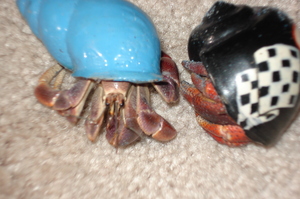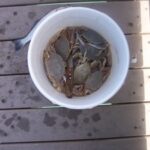Hermit crabs are great animals. Most people may not realize it, but hermit crabs have feelings, and noticeable personalities. They will even become attached to certain people more than others. They can live for a few years, and be very entertaining. Also on the plus side, they’re pretty easy to maintain; they don’t take much space or money, and despite what some would think, these little guys don’t stink either. Here are a few things to keep in mind when setting up the perfect environment for your new hermit crabs.
Original Environment:
It’s best to keep an environment that regularly mirrors the crab’s original environment in the wild, otherwise you might end up with a “crabby” new friend. Keep several traits in mind, including tropical scenery, humidity, as well as temperature.
Cage and Habitat:
You will want to purchase a tank that will insulate the crab. If you purchase more than one animal (since hermit crabs are naturally social, you might want to get your new little friend his/her own friends) it’s best to get a tank the size of at least fifteen gallons or so. You can add in different decorations and toys like fake coconuts (great for a sleepy hermit crab to get some privacy), sterilized sand (don’t bother scooping up sand from the beach, as this is not naturally clean for your pets), and an array of other items. They also have food and water bowls (in the shape of palm trees if you want), and sterilized rocks and sticks at any pet store for your crabs to climb around on. You’ll also want to get a proper sponge to keep in one of the bowls that you can soak daily for your crabs to drink from. Another thing that crabs love is bathing. Luckily, they have special crab baths with salt made specifically for your little friend to use when they want to wash themselves.
Temperature:
Hermit crabs come from tropical habitats, as I said, so it’s obvious that the temperature must be high, and the environment must have humidity. Keeping a glass or plastic tank to hold the heat in is the best, and you should maintain the temperature at about 75 degrees or so. Occasionally you’ll want to use a bottle of water and spray the inside of the cage, while using a source of heat (special heating lights are great) to entice a misty environment in the crab’s habitat.
Shells:
Last but not least, make sure to put some shells around for the crabs. As they grow older, they’ll need to change their outerwear, which means picking out a new “house.” And, just like people, crabs can be pretty choosey as to which new house they wish to move into, so it’s best to put at least two (if not more) shells.
Sterilized, natural shells are the best. Stay away from painted shells, as these not only cost more in general, but more importantly, the paint itself can chip away around the cage, then get consumed by the crab and poison the animal; even paint that is “non-toxic” as pet stores claim, is not healthy to eat.
~~~
Sources:
Aqua Land Pet Plus








